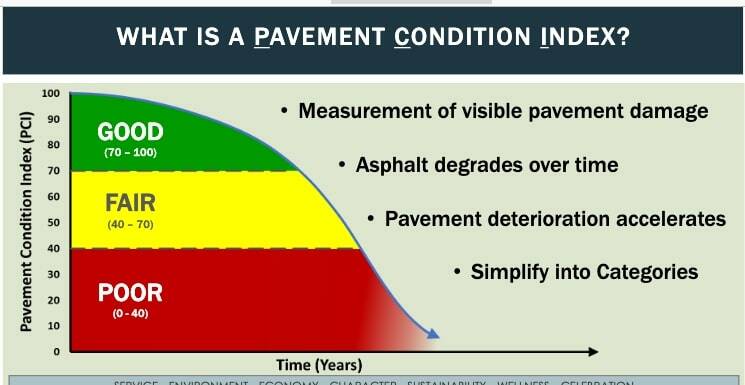On May 27, James Webb, the city’s senior traffic engineer, and Bryce Beason, transportation systems engineer, presented the Auburn City Council with an overview of the city’s programs for preserving the pavement of Auburn’s arterial collectors and local streets, as things stood on Dec. 31, 2024.
The report, “State of our Streets (SOS),” also listed preservation projects current and future.
The SOS refers only to the condition of the pavement — it does not refer to the condition of sidewalks, drainage issues, congestion, or safety issues. And while SOS includes all 238 centerline miles of city-maintained streets and roadways with asphalt and concrete pavement, it excludes private streets, alleys and other streets maintained by the Washington State Department of Transportation (SR 164 for example), or other agencies.
“Pavement deteriorates over time,” said Beason, “but how quickly it degrades changes as it ages. During the first years after paving, visible deterioration of the pavement is minimal. As cracks begin to appear, the deterioration compounds on itself,” and pavement deterioration picks up speed.
To rate the condition, the city uses a Pavement Condition Index (PCI), which is based on the amount of deterioration visible on the pavement surface. On a total scale of 0-100, a PCI of 100-70, the good range, starts with a brand new asphalt road or street, while 70-40 represents the fair range when the city begins to look at maintenance activities. A rating of 40-zero is the poor range with zero, in effect, equal to a gravel road.
Pavement will continue in the good range longer than the fair range, Beason said, so the street preservation program separates the pavement types into the three categories.
So, what do the PCI values look like?
As said above, a PCI of 100 to 70 is good condition, a PCI of 70 to 40 begins at fair, but at 40, the roadway starts to display minor cracking. A PCI of 10 shows intense alligatoring, and zero is complete failure.
The city’s goal is to maintain a PCI of 70 to stave off a complete and pricey rebuild — $200/square yard — as long as possible. Here are the costs the city incurs making that happen:
• Grind and overlay: $30 per square yard;
• Major matching with grind and overlay: $5o per square yard;
• Crack seal/minor patching: $20 per square yard.
“The right treatment at the right time summarizes this concept, and the strategic use of funds is vital to yield the most pavement life at the best possible condition” Beason said.
Additional information providing a more in-depth explanation of a program’s history, projects, funding and technical considerations can be found on the city’s website.
The site uses a dashboard format to give city leaders an executive-level overview that helps them make policy and funding decisions, but also provides the public a quick look at the overall condition of the city’s roadways and preservation program activities.


